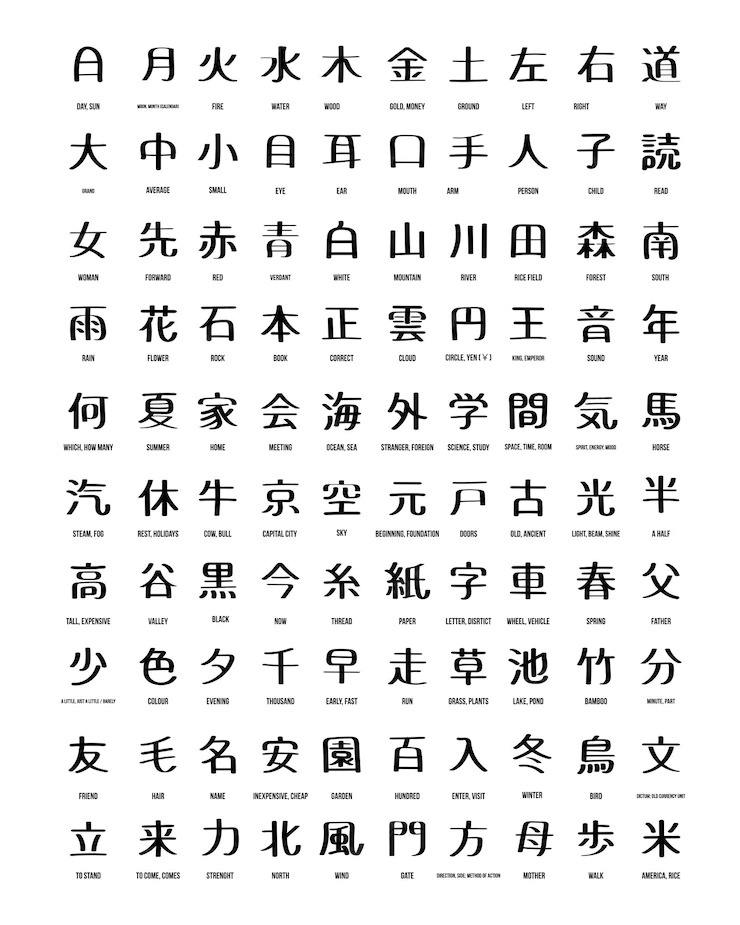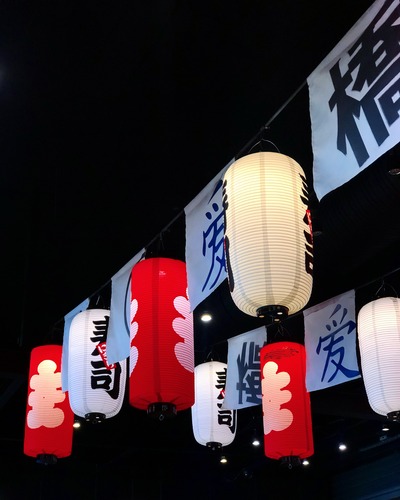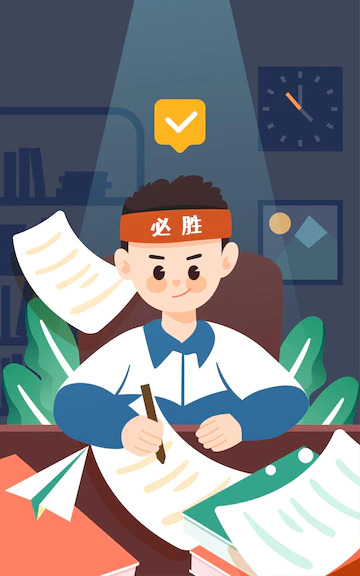If you’re planning to learn Japanese or have already begun your studies, you will come across Kanji, the logographic system of writing used in the Japanese language.
With over tens of thousands of them, it’s only natural to wonder whether learning all those Kanji is necessary for mastering the language.
To answer that question immediately, skipping learning kanji is like skipping leg day at the gym. Kanji is a core part of the Japanese language.
By skipping it, you’re going to develop an imbalance in the body of your language ability.
It may hinder your progress towards becoming proficient in the language (and even in spoken Japanese). Let’s take a look at why, starting with the basics.
Table of Contents
Japanese & Kanji
Learning a new language is a challenging but rewarding experience, and Japanese is no exception.
The language has a unique writing system that includes Kanji, Hiragana, and Katakana. Among these, Kanji is perhaps the most challenging part of the Japanese language for learners.
Kanji consists of Chinese characters that represent words, ideas, or meanings.
Although there are more than 50,000 kanji, only 2,136 are commonly used in modern Japanese. These are called the Jōyō kanji.
What are The Jōyō Kanji?
Jōyō Kanji refers to a list of 2,136 kanji that the Japanese government deems necessary for everyday use. The list was created in 1981 and revised in 2010 to include additional kanji that were not previously included.
The purpose of the list is to simplify the learning process for Japanese learners, especially non-native speakers.
The Jōyō Kanji list includes kanji used in official documents, newspapers, books, and other written materials. It is also used in schools to teach kanji to students. The list includes both traditional and simplified versions of kanji.
Do I Need to Learn Kanji? In a Nutshell
Kanji is an essential component of the Japanese language, and it’s impossible to master the language without learning Kanji.
Like I mentioned before, neglecting kanji is similar to neglecting leg day at the gym. It’s going to cause an imbalance in your proficiency.
Unlike Hiragana and Katakana, which are phonetic writing systems, Kanji represents words or ideas, making it a vital tool for communication in Japanese.
They also often have multiple readings and meanings, which can make them intimidating for people who are just getting started.
Kanji is used everywhere in Japan. You’ll find it extensively in written Japanese, including newspapers, books, and websites. Even in conversations, kanji can be used to clarify the meaning of a word or phrase.
Your Goals
To elaborate, if your main purpose for learning Japanese is solely to communicate with others via spoken conversations, then you can get by without learning kanji.
However, if you want to be able to read, or write any Japanese, you will naturally need to learn them.
With that said, having knowledge of kanji can come in useful during conversations too.
For instance, if you’re having a conversation with someone and don’t know the meaning of a word, you could ask them to write down the kanji. If you know the characters, you will be able to deduce the meaning of a word much more easily.
While you don’t necessarily need to know kanji in order to communicate, learning them does come with massive advantages.
How Hard Is It to Learn Kanji?
Learning Kanji is undoubtedly a challenging task, especially for beginners.
Even with the governments Joyo Kanji list reducing the number to 2,136 characters, it can seem overwhelming, but it’s not impossible.
You absolutely don’t need to learn all 2136 to become proficient in Japanese, but the more you know, the more it will benefit you in the long run.
Kanji is a skill that requires time and dedication to master, and it’s best learned through consistent practice and exposure.
One way to make Kanji learning more manageable is to break it down into smaller components. Start by learning the basic radicals, which are the building blocks of Kanji characters.
Once you’ve mastered the radicals, move on to learning the most common Kanji characters used in everyday communication.
It’s also helpful to use mnemonics and other memory aids to remember Kanji characters.
For example, the Kanji character for “tree” (木) looks like a tree with its roots in the ground. By associating a visual image with the character, it becomes easier to remember.
If this method of learning sounds interesting to you, (it was the most fun for me), I strongly recommend taking a look at Hesig.
How Long Does It Take to Learn Kanji?
The time it takes to learn Kanji varies from person to person and depends on several factors, such as your learning style, study habits, and the amount of time you dedicate to learning.
However, on average, it takes between 1 to 2 years of consistent study to learn the most commonly used Kanji characters. I studied for 10 minutes everyday and was able to learn the 2136 kanji in around 3 years.
It’s worth noting that learning Kanji is not a one-time process. To maintain your Kanji skills, you’ll need to continue practicing and reviewing Kanji characters regularly.
You will forget them if you don’t keep revising ones you’ve learnt. Try to avoid cramming too much into your head at once. Give yourself time to digest them.
Do Native Japanese Speakers Know All Kanji Characters?
No, even native Japanese speakers don’t know all Kanji characters. While they may have a more extensive Kanji vocabulary than a non-native speaker, they may still encounter unfamiliar Kanji characters from time to time.
It’s also worth noting that not all Kanji characters are equally important. Some characters are more commonly used in everyday communication, while others are more specialized and used in specific fields, such as medicine or law.
Managing Kanji
Some tools can make the learning process more manageable. One such tool is Furigana, a reading aid that displays Hiragana above or beside Kanji characters.
This helps learners read Kanji characters while they are still building their Kanji skills. Be careful not to become too overly reliant on furigana, though, as they aren’t used outside of study materials very much at all.
If your goal is to play games in Japanese though, you might be pleasantly surprised to learn that games sometimes do include Furigana in their text.
Another tool is Romaji, a system of writing Japanese words using the Latin alphabet. While Romaji can be helpful for beginners, it’s essential to note that it’s not commonly used in written Japanese.
Therefore, it’s not a long-term solution for learners who want to become proficient in the language. In fact, I recommend skipping romaji entirely and going straight to learning hiragana.
Advantages of Learning Kanji
Learning Kanji can be challenging, but it also has many benefits. Here are some of the ways that learning Kanji can enhance your Japanese learning experience:
Improved Reading and Writing Skills
One of the most obvious and significant advantages of learning Kanji is that it enhances your reading and writing skills in Japanese.
Kanji provides context and meaning to written communication, making it easier to understand complex texts.
Translation apps and resources are becoming better by the day, however Japan is largely still a paper-based society.
You will be getting paper postal mail, rather than emails, contracts in paper form rather than digital etc.
By learning Kanji, you will find that you’ll have a much easier time reading Japanese newspapers, books, and websites without relying on translations.
Deeper Understanding of Japanese Culture
Many Kanji characters have a cultural and historical significance in Japan. By learning Kanji, you can gain a deeper understanding of Japanese culture, traditions, and history.
Kanji is everywhere in Japan, and learning it will make travelling and exploring the country that more interesting for you when you can understand their meaning and significance.
Some kanji have very deep meanings that are unique to Japanese culture. Take the Japanese word for “soul”, for example. 魂 (tamashii).
This kanji has nuances attached to the word that are very different to the word for “soul” in the west. This word refers to a soul that can reincarnate, and can sometimes take on a physical form.
Improved Vocabulary and Comprehension Skills
Kanji characters often have multiple meanings and readings. Knowing Kanji will help you to deduce the meaning of words even if you can’t read them.
For example, the Japanese language has multiple words for “heart”. 心 (kokoro).
However you do not use this word when referring to your physical heart, but rather you use it when referring to some spiritual or mental.
For instance, when you want to say something like “from the bottom of my heart, thank you” in Japanese.
Furthermore, learning Kanji directly aids your ability to retain vocabulary and and make sense of grammar in Japanese.
As Japanese sentences dont contain spaces between words, it can be difficult to read a passage that is solely composed of hiragana.
Words that are written in kanji are more obvious that they are individual words
No Kanji:まいにちにほんごのべんきょうをがんばってます。
Kanji: 毎日日本語の勉強を頑張ってます。
Enhances Career Opportunities
Learning Kanji can also enhance your career opportunities in Japan. Many job opportunities in Japan require proficiency in written and spoken Japanese, including knowledge of Kanji.
By learning Kanji, you can increase your chances of finding a job in Japan and enhance your career prospects.
To put it simply, if you want to become proficient in Japanese, you need to learn Kanji.
While it’s possible to communicate in Japanese without Kanji, you’ll be limiting your abilities to read, write, and understand the language.
Better Access to Japanese Resources
Many Japanese resources, such as books, websites, and newspapers, are written in Kanji. By learning Kanji, you can access a wider range of Japanese resources, which can help you improve your Japanese even further.
Many of the advanced Japanese learning materials are written in Japanese. Hence, understanding Kanji can be very useful and beneficial to improving other elements of language study.
How Many Kanji Do I Need to Know?
The number of Kanji you need to know depends on what your goals are with the Japanese language.
The Japanese government has established a set of guidelines called the Japanese Language Proficiency Test (JLPT) to measure a person’s proficiency in the language.
The JLPT consists of five levels, with level five being the easiest and level one being the most difficult.
To give you an idea of how many Kanji you need to know for each level, here’s a breakdown:
JLPT Level 5
Beginner Japanese is the easiest level and requires knowledge of approximately 100 Kanji characters.
JLPT Level 4
Lower-intermediate Japanese that requires knowledge of approximately 300 Kanji characters.
JLPT Level 3
Upper-intermediate Japanese that requires knowledge of approximately 600 Kanji characters.
JLPT Level 2
Business/advanced level Japanese that requires knowledge of approximately 1,000 Kanji characters.
JLPT Level 1
Proficient/fluent Japanese is the most difficult level and requires knowledge of approximately 2,000 Kanji characters.
Keep in mind that these numbers are only estimates, and the actual number of Kanji you need to know may vary depending on your goals and level of proficiency.
So, How Important is Kanji?
Learning Kanji is a core part of Japanese, and therefore is necessary for mastering the Japanese language.
While it can be challenging, it has many benefits for language learners, including improved reading and writing skills, a deeper understanding of Japanese culture, improved vocabulary and comprehension skills, and better access to Japanese resources.
Don’t be discouraged by the initial difficulty of learning Kanji.
With time and dedication, you can master this essential aspect of the Japanese language and open up new opportunities for communication, culture, and knowledge.
I was able to learn 2136 of the Joyo Kanji by stuyding for 10 minutes a day for 3 years. You can definitely do it faster!
FAQs:
Can I Learn Japanese Without Learning Kanji?
If you really dont want to bother with kanji at all, it is possible to communicate in Japanese without learning itm but it’s not recommended.
Kanji is an essential component of the Japanese language, and it’s almost impossible to master the language without learning Kanji.
How many Kanji characters do I need to learn?
There are over 2,136 Joyo Kanji characters that are commonly used in modern Japanese. While it’s not necessary to learn all of them, it’s recommended to learn the most commonly used characters first.
How long does it take to learn Kanji?
The time it takes to learn Kanji varies from person to person and depends on several factors, such as your learning style, study habits, and the amount of time you dedicate to learning.
However, on average, it takes between 1 to 2 years of consistent study to learn the most commonly used Kanji characters.
It took me 3 years of consistent use of Anki, a digital flashcard application that implements SRS to properly learn the 2136 Joyo kanji.
I used the application everyday for 10-20 minutes. With more study time, you could definitely speed up this process.
Are there any shortcuts to learning Kanji?
There are no shortcuts to learning Kanji, but some tools can make the learning process more manageable.
For example, you can use flashcards, mnemonic devices, or Kanji learning apps to help you remember the characters more easily.
Can I learn Kanji on my own?
Absolutely! You can learn Kanji on your own, but I recommended to take a structured approach and use textbooks or online resources that provide clear explanations, examples, and practice exercises.
I strongly recommend using Anki! It’s completely free for Android/PC. Costs a bit of money for Iphone. Sorry Iphone users!
Don’t be intimidated by the initial difficulty of learning Kanji. With the right tools and a structured approach, you can learn this crucial aspect of the Japanese language and achieve your language learning goals.




